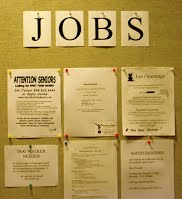- Ashland High School
- Career Planning
Career Planning
-
Many students see career planning as something that begins once they have graduated from high school or college. On the contrary, career planning is a process that can and should begin while in high school, and most naturally should continue into the college years, if college is the appropriate path for your chosen career.
There are many resources available to help you plan. Ashland High School primarily uses the Naviance tool to help students link their preferences to careers. During freshman year, students will be taught how to sign on to Naviance, and they can then begin the first steps toward career planning.
At the high school level, perhaps the best way of starting is to begin the process of self-exploration. Self-exploration allows you to think about your:- Skills and Abilities
- Interests
- Personal Priorities
- Training and Education
- Life Experiences
College or Other Options?In addition to attending a four-year college or university, there are many other options for spending the years after high school. You may prefer a career or vocational college or institute, or choose to enlist in the military. Perhaps you want to find an internship that allows you to explore your career choice further before making a commitment. Some students take a year off between high school and college, a "gap year," to either refine their interests, perform community service or fulfill a goal or dream.
Below are post-secondary options to explore with your school counselor:
An Alternative Thirteenth YearMany students are not yet ready or prefer not to go directly to college or to some other degree-granting educational programs immediately after completing high school. While some of these students may choose a year at a prep school, join the military, or work full time before enrolling at a college, many others seek some other alternatives for a single transition year, such as a travel adventure or an internship experience. In a process called deferred admissions, students can apply to college in the fall of the senior year, and in the spring ask permission of the college they wish to attend to defer admission for one year. In some cases admission can also be deferred until the following January. In other words, students wanting to pursue this option can maintain acceptance to a college but not begin until a year or six months later.
Apprenticeship Training
An apprenticeship is a formal way of learning a skill or trade by working with someone who works at that particular job. Apprenticeship programs almost always include class study along with a full-time job. Apprenticeships usually cover periods of time specified by the government or labor unions. Time spent in an apprenticeship depends on the difficulty of the skill to be learned. While most programs are between three and four years, a few can be as short as two years or as long as five or six years. One advantage of an apprenticeship is that rather than paying for the training him/herself, the apprentice is being paid while learning a skill. The number of apprenticeship openings is limited and not all qualified applicants can enter such programs. Tests and personal interviews are often required. Occupations with apprenticeship training include carpentry, plumbing, etc.
Business, Trade or Technical Programs
Students may opt to pursue further training in business, trade or technical programs. Regional vocational technical schools such as Joseph P. Keefe Technical School's Continuing Education and community colleges such as MassBay offer many such programs. The training provided is practical and prepares students for employment in specific fields. Students can be trained in secretarial skills, computer programming, electronics, auto repair, cosmetology, drafting, health occupations, and travel and tourism, and other careers. Job placement services are usually available upon completion of a program. The length of a program varies from several weeks to several years. Costs can also vary depending upon the length and quality of training.
Military Training
Branches of the military offer training in almost 1,500 different occupations. Many of these are similar to occupations found in civilian life. The training varies a great deal in length of time and may include classroom study, on-the-job training, or both. Enlistees are paid while they receive their training. The military prepares persons for a variety of jobs including aircraft mechanic, heavy equipment operator, computer or electronics technician, meteorologist, fire fighter, and welder. See the Online Military Career Guide — https://www.todaysmilitary.com/careers-benefits.
Preparatory Schools
Some students may wish to consider an additional year of secondary school prior to attending college. A list of preparatory schools offering post-graduate (PG) options is available in the College/Career Center. Typically, students who consider this option do so to improve their study skills or their academic record in a structured environment with small classes in order to increase college options. In addition, preparatory school is sometimes suggested for athletes by college coaches. Often students will consider a PG year at a preparatory school while simultaneously applying to colleges during the fall of the senior year. Decisions and deposits are not required until May 1 in most cases.
Working Full-Time
A student planning to work might consider the following steps.
- Visit MassHire Department of Career Services. The primary function of this state agency is to help you find employment.
- Seek out companies and businesses that offer on-the-job training (OJT) programs to new employees. OJT can help a person gain the skills to succeed in certain jobs and also to advance later on.

